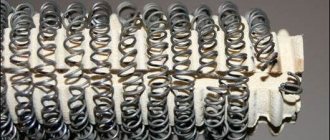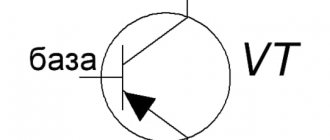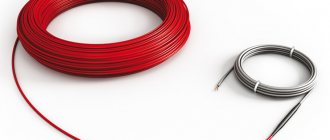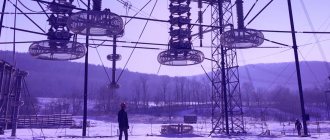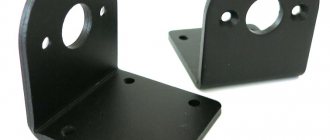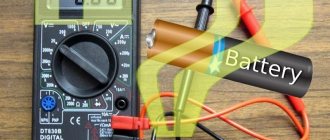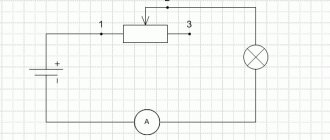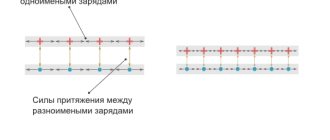To buy a nichrome spiral at NPK Metotechnika, just contact us using one of the convenient methods - email, phone, website. We will answer questions related to products and help you select the necessary items.
A detailed description of the methods of production of the specified products, brands and recommendations for use are presented on this page in the relevant sections.
Characteristics of nichrome grades for heating coils
Alloy X20N80 contains, in addition to nickel and chromium in the volume of 72.9 - 78.8 and 20 - 23%, 0.6% manganese, 0.2% titanium, up to 0.5% zirconium, as well as silicon, carbon, phosphorus, aluminum. It can withstand heating up to 1200 °C and has high electrical resistance - 1110x109 Ohm/m. The nichrome spiral X20N80 melts when the temperature reaches 1400 °C. The metal is difficult to weld and requires heating and special equipment.
Heating spiral made of alloy grade X15N60 is used in precision instruments, parts operating in vacuum, and electronic devices. Chromium and nickel in the alloy are 18 and 61%, respectively, or slightly less. Manganese, titanium, aluminum, silicon and carbon are contained in amounts greater than 1%. The composition also contains a lot of iron - more than 17%, which determines the lower price of the material and a high level of flexibility. The melting point of the metal reaches 1390 °C.
Both alloys belong to the precision class - their properties depend on the exact percentage of components. Their general characteristics are sufficient flexibility for the manufacture of spirals, high resistivity of nichrome and retention of the given shape when heated to high temperatures exceeding 1000 °C.
Stamps
Spirals are made from nichrome of the two most common grades in industry: X20N80 and X15N60.
These are alloys of nickel and chromium (hence the name “nichrome”). The first of these contains ~80% Ni and ~20% Cr, the second - ~60% Ni and ~15% Cr. The difference in the mass fraction of nickel has a significant impact on the performance and economic characteristics of the alloys. X20N80 has a higher maximum operating temperature and higher cost compared to X15N60. The chemical composition of the materials in question also includes iron (Fe) and manganese (Mn). The chemical composition of precision alloys, including nichromes X20N80 and X15N60, is determined by the GOST 10994-74 standard.
Calculation of the electrical resistance of the spiral before winding it yourself
For many homemade and factory-made devices and devices, winding the spiral with your own hands seems to be the only correct solution. But for this it is necessary to perform a number of preliminary operations. The most important of them is the calculation of the ohmic resistance of nichrome wire.
To calculate resistance, the formula R = ρ L / S is used.
Meaning of symbols:
R (Ohm) - final active resistance;
ρ (Ohm mm) - specific resistance of the material;
L (m) - wire length;
S(mm2) - perpendicular section area.
The resistivity of the most common grades of nichrome is given in Table 1
Table 1
| Nichrome brand | Ohm•mm²/m at 20 °C – 1100 °C |
| Х20Н80 (Х20Н80-Н) | 1,13 — 1,167 |
| Х15Н60 (Х10Н60-Н) | 1,12 — 1,248 |
But, in order not to count yourself, it is convenient to use data on the finished resistance of nichrome wire of a given length.
Using an excerpt from reference table 2, the calculation of a nichrome spiral is simplified and it is easy to find the required wire length depending on the given diameter.
Detailed data on the electrical resistance of 1 m of nichrome, fechral wire Ohm/m - see the link
Electrical resistance values for 1 m of nichrome, fechral tape Ohm/m - see the link
Theoretical weight of 1 m of nichrome wire, tape - see the link
table 2
| Diameter, mm | Weight, grams per 1 m | Ohm/m | Ohm/m |
| Х20Н80 | Х15Н60 | ||
| 0,1 | 0,07 | 137 | 139 |
| 0,2 | 0,26 | 34,6 | 35.2 |
| 0,25 | 0,41 | 22,2 | 22,6 |
| 0,3 | 0,59 | 15,4 | 15,8 |
| 0,4 | 1,06 | 8,8 | 8,9 |
From the data in the table, a tendency towards a decrease in the resistance of a linear meter of nichrome wire depending on the diameter is clearly visible.
Determine the furnace power and current
So - you have a chamber that will be used for heating. Before making calculations, you need to determine the power of the future furnace by calculating the displacement. To do this, you need to measure the length, width and height and convert it into liters.
The table shows the furnace power according to volumes:
| Displacement | Power(W/L |
| 1-5 | 300-500 |
| 6-10 | 120-300 |
| 11-50 | 80-120 |
| 51-100 | 60-80 |
| 101-500 | 50-60 |
Now we determine the current strength - we need to divide the furnace power by the voltage. We find the first indicator in the table; for voltage we take the value for a household network - 220 volts. Now we know the current strength that our furnace will require, all that remains is to decide on the spiral.
How to wind a heating spiral from nichrome wire
Spiral winding is a technologically simple operation. It can be done entirely manually or use a mechanical device - a rotating shaft of the required diameter with a handle or mounted on an electric motor gearbox. The flexibility of nichrome wire and the ability to retain its shape allows it to be wound onto a metal rod when cold.
Having calculated the length of the wire, cut off the required amount and wind it tightly, turn by turn, onto the rod, leaving two straight ends for connection to the terminals. It is not difficult to stretch the finished spiral along the required length of the grooves in the ceramic base.
Production
A nichrome spiral is wound from cold-drawn wire without heating.
If the material of the future heater is fechral wire, then the winding is carried out with heating, which is carried out by passing an electric current through the workpiece. In this case, a transformer with voltage steps of 5-10 V is used. The voltage is supplied to the lathe bed and to the tool holder through a guide in which a hole is made for the wire. The guide is insulated from the frame with textolite gaskets. The spiral winding speed is selected so as to heat a given section of the wire to a temperature of 200-300 °C (in the zone of 400-500 °C alloys are brittle). The workpiece is heated only in the area from the guide on the tool holder to the spiral mandrel. The bending of the jumpers must be carried out in a special device without sharp impacts or bends in order to avoid breakages.
Where to buy nichrome wire
Current prices for nichrome wire, tape, thread.
In the price list of the PARTAL company, as well as in the Online store, along with a wide range of special alloys with special properties, you can select nichrome wire of the required grade for the manufacture of heating elements.
You can also order standard and non-standard electrical spirals of any complexity.
Calculate the cross section of the heater
To prevent the spiral from melting under voltage, it is necessary to determine the thickness of the wire. It is selected according to the current value and the temperature to which it is planned to heat the oven. These indicators are interrelated.
The table shows the basic values that will help determine the wire diameter:
| Heating temperature, degrees Celsius | Wire cross-section, mm | |||
| 200 | 400 | 600 | 800 | |
| Current strength for conductor operation, A | ||||
| 2.3 | 37.5 | 54.5 | 64 | 7.07 |
| 37 | 60 | 80 | 93 | 12.6 |
| 52 | 83 | 105 | 124 | 19.6 |
It is not recommended to buy wire that will operate at maximum power. Usually a conductor with a reserve cross-section is selected, this ensures that it does not melt during constant operation. In addition, manufacturers sometimes skimp on material and there is a risk of buying a defective product. It is better to select a wire for a given current with a cross-section an order of magnitude higher.
Determining the length of the heater
The final stage of calculations is to determine the length of the conductor that will be required to heat the furnace. Thanks to the spiral shape, it is possible to significantly increase the heating area with the compact shape of the element itself. If the coil length is not enough, the oven will not be able to provide the required temperature.
Calculating the length of the spiral is simple - you need to divide the voltage by the current, then multiply this by the coefficient, which is determined by the formula K = 5/(conductor resistivity.).
This will give us the length of the spiral that will be required for the oven. All that remains is to assemble the device and you can get to work. If the calculations are carried out correctly, the equipment will provide constant heating to the required temperatures.
What are heating elements?
Heaters for industrial equipment are usually powered by an electrical source. Typical heating elements are made of carbon steel or stainless steel. They are used in heating water or similar general purpose liquids and are generally non-corrosive. Other corrosion-resistant materials used are alloys such as copper or titanium. They are most resistant to high temperatures and can withstand very aggressive environments. Recently, specially fabricated alloys such as nickel-chromium superalloys have been introduced for more advanced applications.
The choice of heating elements largely depends on the type and nature of the environment for which it is used. Besides the medium, the type of heater that will be installed also affects what alloy it should be made from. Industrial heating elements are factory configured in any shape and size. They can also operate at fairly high temperatures, as some equipment must operate at temperatures above 500 C.
The material for heating elements varies depending on the application. Immersion heaters often require a material that is highly resistant to degradation at extreme temperatures and can remain submerged without being subject to erosion. Given these conditions, stainless steel is an ideal choice for heating water and various chemicals. Stainless steel is made from alloy steel containing at least 10.5% FeCrAl alloy. The biggest advantage of stainless steel over regular carbon steel is obviously its resistance to oxidation. However, stainless steel is by no means completely resistant to corrosion. There are certain external environments, such as low oxygen levels, high salinity, or poor circulation, that make stainless steel vulnerable to a passive film of chromium oxides.
The use of exotic alloys for heating elements further enhances the heaters' ability to withstand their inherent corrosive nature. Copper, for example, does not react with water to avoid normal oxidation. However, it eventually reacts to oxygen in the air with prolonged use and forms a layer of copper oxide rather than iron oxide. The use of titanium reduces the risk of corrosion, since one of its properties is high corrosion resistance. An additional advantage of titanium is its light weight compared to other metals.
Overview of heating element materials
The global market for components for heaters offers a wide range of different materials that can be used to manufacture heating elements for industrial equipment. These consumables include metal-based ceramic insulators, metal alloys, and carbon or graphite heating coil materials. This article focuses on traditional metal alloys for heating coil, such as iron-chromium-aluminum and nickel-chromium. These alloys can be divided into two classes: one suitable for processing in the presence of oxygen, and the other must be provided with adequate protection against oxygen. The class of alloys that need to be protected from oxygen includes tantalum, tungsten and molybdenum.
When temperatures rise, the atmosphere plays an important role as materials react differently to different compounds. It is possible that a system that works ideally at a certain air temperature may quickly fail if used at the same temperature but in a different atmosphere. The service life of the heating element is also an important operating parameter. It's important to figure out whether you need the item to last for a few weeks, a few months, or years. For any given element, the higher the operating temperature, the shorter its service life.
Heating element materials
Around 1900, the German firm WC Heraeus developed the first commercial platinum furnace. In 1902, the company marketed a platinum strip furnace that could reach temperatures of 1500ºC in 5 minutes, operate at 1500ºC for several hours, and could reach temperatures of 1700ºC for short periods of time. Over the past nearly 200 years since this furnace was first developed, resistive electric furnaces have undergone numerous improvements in insulation, control, and application of heating materials.
